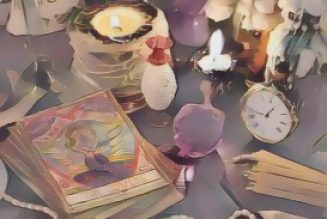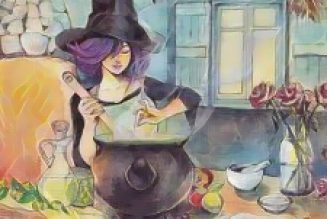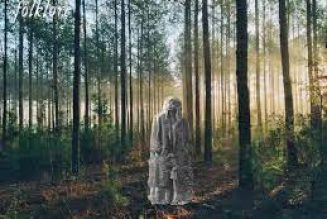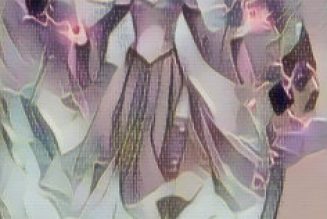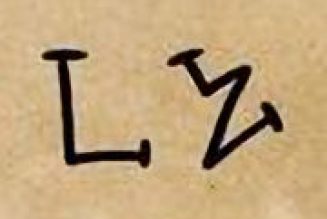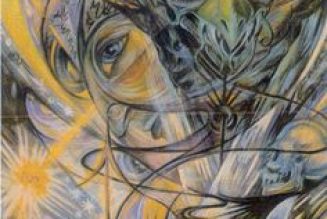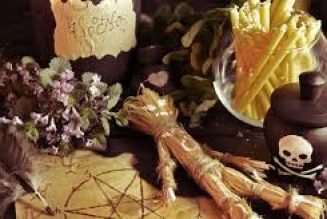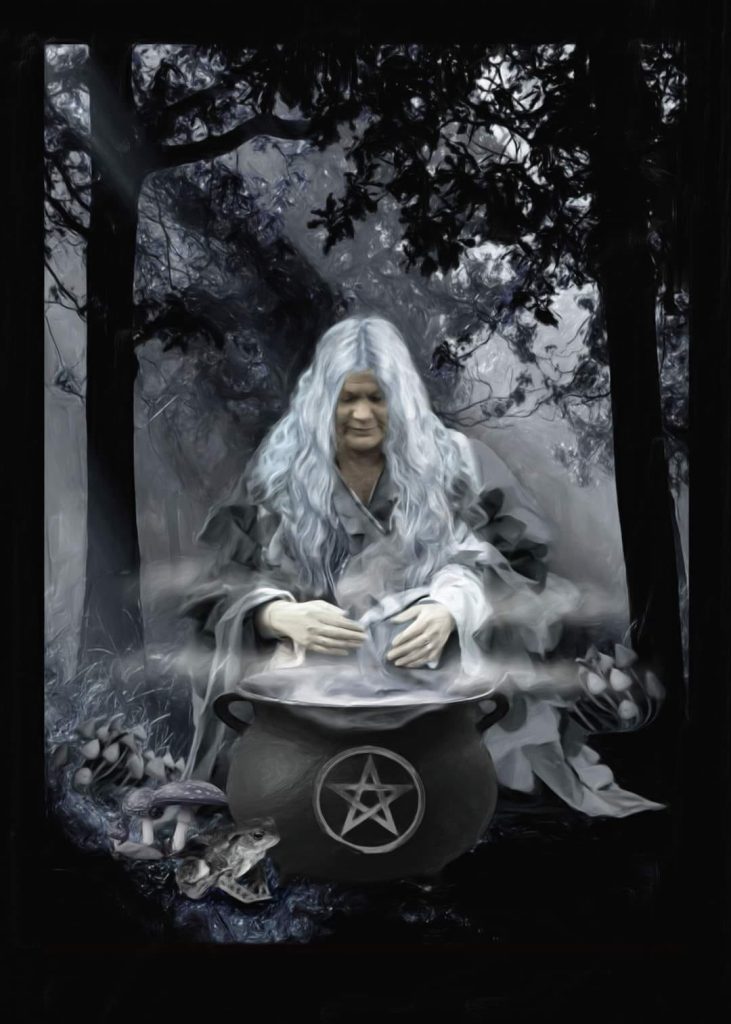
We enter the season of the Crone, the Hag of Winter. Beware, this is no gentle old lady – she is wild, fierce and elemental, just like winter itself. She is the storm rider, the shapeshifter, the ground freezer, the plant witherer, the bringer of death and the collector of souls. She has had many names in many places – Ceridwen, Hecate, Frau Gauden, Perchta, Nicneven, Reisarova, Frau Holda, Befana, the Hag of Beare, Babushka, Beira, Gyre-Carline, Mag Moullach, Gentle Annie, Lussi, and Saelde amongst numerous others.
In Scotland she is the Cailleach Bheur (‘The Blue Hag’), whose face is blue with cold, her hair as white as frost. With her holly staff in her hand and a carrion crow perched on her shoulder she strides across the land, beating down the vegetation, and hardening the earth with ice. [1] In her great cauldron, the whirlpool of Corryvreckan, she washes ‘the plaid of old Scotland’ until it is white with snow. [2] In she is Germany Frau Holda (or Frau Holle) who makes it snow when she shakes her feather pillows out. In Leicestershire, my home county, she is Black Annis, the blue-faced hag who haunts the Dane Hills, dealing death.
Winter is a time of death – the death of plants, the death of animals, and the death of those humans for whom the season is too harsh, so it is not surprising that the Hag of Winter is a death goddess and a collector of souls. In this role she often leads the Wild Hunt, flying through the midnight skies accompanied by wild women and ghosts, gathering the recently dead. In Norse myth these are the túnridur, the ‘hag riders’, or the gandreid ‘witch ride’. In Norway, the goddess Reisarova leads the aaskereida (‘lightning and thunder’), a spectral host who rode black horses with eyes like embers, while in Germany the Furious Host rode is led by Frau Holle, Percht or Berchta (‘Shining’). Slovenians call the goddess leading the hosts of the dead Zlata Baba or ‘Golden Crone’.
The Tyroleans said that whoever got in Wild Berchta’s way as she tore through the night with the Wild Hunt would sink into trance and upon awakening, be able to predict how the next harvest would be, and this leads us to something important about the Hag of Winter – there is a deep connection between fertility and winter death. Perchta fructified the land by ploughing it underground, while her heimchen (the souls of the dead babies she collected) watered the fields. While the Maiden begins it, the Mother bears it, and the Harvest Queen reaps it, the fertility of the next year’s harvest is fundamentally the Crone’s gift – the sleeping seeds in the underworld are in her care.
The fierce and powerful vision of the Crone Goddess found in myth is fundamentally at odds with the sanitised and patronising view of her I often come across – the Crone as the kindly wise old woman, waiting for death, who exists solely to patiently pass on her years of accumulated wisdom – a concept reflecting our own society, with its heritage of patriarchal monotheism, where old women are seen as useless, past sex, past childbearing, past working. That characterisation doesn’t fit any of the old ladies I know – most of whom are pretty formidable – and it certainly doesn’t fit the stories of the Hag who might be considered the most elementally powerful goddess of all.
In this dismal season, when the earth is bare and the trees skeletal, when everything showy is stripped away, we feel the underlying bones of creation and we see more clearly into its deepest secrets. We approach its elemental power, and this is the true knowledge of the Crone, the coron or ‘crowned one’, the Cailleach the veiled one, the hag, ‘the sacred one’
